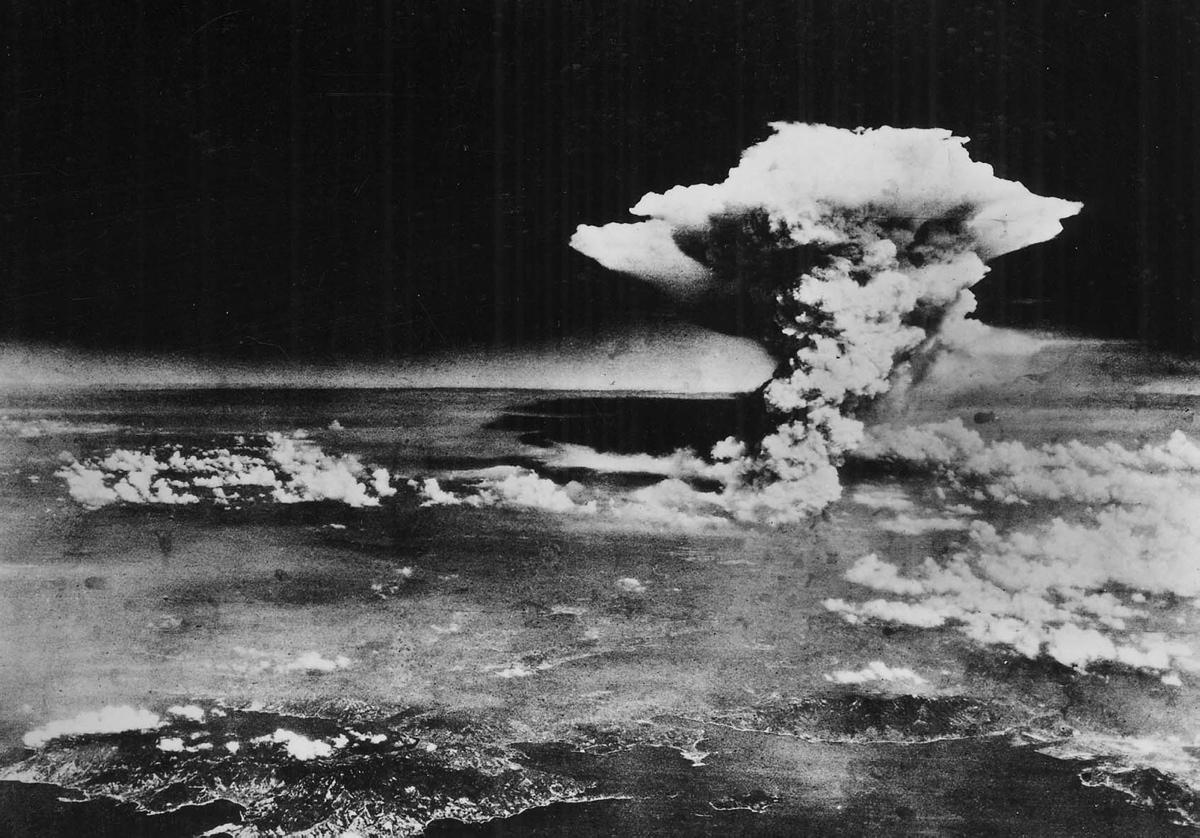Nearly one third of the countries in the world, about 60 so far, have put satellites into orbit. That number will grow in 2012 as other countries put their first satellites into orbit for the first time.
A smaller number of countries have developed the scientific and engineering prowess to have a fully independent capability to place satellites into orbit with their own launch vehicle instead of relying on foreign countries. Numerous countries have designed and built their satellites but do not yet have the capability to indigenously produce their own launch vehicle or rocket.
Satellites serve a large number of purposes. Weather, communications, navigation, Earth observation and research satellites are a central part of modern industrial society. There are both military and civilian satellites.
North Korea’s satellite launch
The Democratic People’s Republic of Korea announced on March 2012 the launch of a non-military satellite, Kwangmyongsong-3, manufactured by North Korea itself with indigenous technology to mark the 100th birth anniversary of the late President Kim Il-Sung. The DPRK space program began in the 1980s.
The DPRK, within a few hours following the launch on April 13, announced that the satellite launch failed to reach orbit. Although this mission failed, there is no question that the DPRK, like most developing countries in the region and the world, will continue to work to perfect its scientific and engineering capabilities so that it can rely on its own technologies to put satellites into space.
Smaller countries and emerging economies, as a general rule, want to develop their independent technological capabilities so as to avoid the relentless bullying from world imperialism and the so-called major powers.
With the DPRK, however, this is not simply a preference. It is the very top priority of the government. Facing unrelenting hostility from Washington and its allies in the South Korean government, the DPRK has believed for several decades that the development of its indigenous technological capacity, especially as it concerns its military and space programs, is a matter of life and death.
The sky is falling!
The U.S. government and media treated the April 13 satellite launch as a virtual act of war by the DPRK. Although no one in the Obama administration disputed that this satellite was for purely non-military purposes, the White House and the U.S. mass media condemned North Korea for using its own launch vehicle or rocket, which they argue was merely a cover for the test of an advanced rocket prototype that could someday be used as a launch platform for a weapon.
The logic of the U.S. argument: any and every effort by the DPRK to do something all other countries desire, which is to possess an indigenous capability to launch its own satellites, must be treated as an existential threat to world peace.
Given that the Pentagon conducts massive mock invasions and mock bombing assaults against the DPRK in regular joint war “games” with South Korea, it is impossible to conceive of the DPRK accepting the notion that its programs are the actual threat to peace on the peninsula.
The tactical orientation of the Obama administration and the Pentagon is to keep North Korea in a resource-draining military and economic vice from which it has neither real options nor escape.
It is impossible to appease or placate the U.S. propaganda machine
The DPRK is attacked for “violating international rules” and its “agreements” with the United States but the opposite is actually true.
When it announced the April 13 satellite launch in March 2012, the DPRK’s space agency, the Korean Committee for Space Technology, issued a statement that completely conforms to international standards and obligation.
“The DPRK will strictly abide by relevant international regulations and usage concerning the launch of scientific and technological satellites for peaceful purposes and ensure maximum transparency, thereby contributing to promoting international trust and cooperation in the field of space scientific researches and satellite launches,” said the statement.
Although the United States has launched thousands of satellites—for both military and civilian purposes—and has prioritized its own militarization strategy for outer space, the U.S. capitalist-owned media treated the DPRK satellite launch as wild and reckless provocation.
The April 11 issue of the Washington Post condemned the Obama administration for having resumed negotiations with the DPRK on Feb. 29. “Duped Again” is the screaming headline of the Post editorial, which treats the DPRK as a wild and dangerous provocateur whose people should now be deprived food and other economic necessities as punishment for having dared to demonstrate an indigenous technological capability to launch a satellite into orbit.
The colonial arrogance of the Washington Post editorial board is echoed faithfully by the other corporate media, the politicians from both ruling class parties in the United States, and even by some liberal and “socialist” media outlets.
The strategic objective
Any move by the DPRK to assert its independent capacity in economic, military or diplomatic matters is deemed a hostile act by the U.S. government.
North Korea, according to the Washington foreign policy establishment, was supposed to go the way of the East German socialist government which was swallowed up by the West German capitalist government in 1989 as the Soviet Union was beginning to unravel.
The U.S. still occupies South Korea with tens of thousands of foreign troops. Destroying the government of the DPRK would allow the U.S. to turn the entire Korean peninsula into an extension of U.S. power—right on the border of China and Russia. That is the ultimate motivation for U.S. policy toward North Korea.
The role of China and Russia
China and Russia are well aware of the U.S. game plan in North Korea. Neither wants the North Korean government to be overthrown. If successful in carrying out “regime change,” U.S. military forces would be permanently stationed right along China and Russia’s border.
Both countries have a long-term friendly relationship with North Korea that began with the creation of a socialist bloc of nations following World War II. Even though the USSR was dissolved in 1992, Russia views the DPRK as an ally and counter-weight against U.S. hegemonic designs in Northeast Asia.
Rather than directly confront and expose the U.S. designs on North Korea, however, both China and Russia are engaged in a careful diplomatic dance—appeasing Washington by agreeing to criticize the DPRK in some UN Resolutions but only on the conditions that the resolutions are watered down in a way that makes the outbreak of war or military conflict less likely.
The U.S. and South Korean media have been filled with articles about how even China and Russia were so opposed to North Korea’s satellite launch that they condemned it along with the United States. This is partly true and partly untrue. In fact, China and Russia refused to go along with U.S. demands for a new binding UN Security Council resolution condemning North Korea and imposing additional sanctions on the country. Instead, they appeased Washington by allowing U.S. Ambassador Susan Rice to issue a non-binding Security Council “Presidential Statement” condemning North Korea (by coincidence, the U.S. in April held the rotating seat of President of the Security Council).
North Korea’s view of U.S. strategy
The DPRK, although it values its relationship with China and Russia, is not about to allow its right to launch satellites or defend itself militarily be compromised by others.
When the Security Council Presidential Statement was issued on April 16, the DPRK promptly announced that it was expelling foreign nuclear inspectors that it had just allowed to return to the country in March 2012.
An article from North Korea’s Rodong Sinmun newspaper was carried on the Korean Central News Agency Web site on April 23 summarizing the DPRK’s view of what it believes to be the actual objectives of the U.S. campaign against North Korea’s space program:
The U.S. is intent on establishing Missile Defense system in Northeast Asia and Middle East under the signboard of “defense”. It is even making far-fetched assertion that the DPRK’s satellite launch for peaceful purposes was a long-range missile launch.
An aim sought by the U.S. is to make “threats” from the DPRK a fait accompli and justify its Missile Defense moves for world domination.
The U.S. says that the global MD is to thwart missile attacks from the DPRK and Iran but this is just a lame excuse.
The U.S. Missile Defense program is explained to people in the United States as a new system to prevent foreign missiles from ever reaching the shores of the United States. Thus, “Defense” provides a handy promotional label for an extremely expensive weapons system. The rest of the world views the system as a means to give the United States a nuclear first-strike capacity against any targeted country whose own capacity to retaliate, if any, would be rendered harmless by the Missile Defense shield.
Current United States military doctrine gives priority to technological dominance of space. The Pentagon has large numbers of satellites that fulfill many tasks in the coordination of nuclear and conventional weapons systems. Using an integrated system of satellites, sensors, lasers and missiles the Pentagon continues to push forward with the National Missile Defense program (also known as “Star Wars”), which alone has cost more than $150 billion since its inception around 1980.
The demonization of the DPRK is so complete in the United States that is nearly unheard of for the truth to be told.
Here are some useful facts:
Fact 1: The DPRK complied with the terms of the Feb. 29 agreement to resume negotiations with the United States, China, Russia, Japan and South Korea—known as the “six-party talks”—on the enduring crisis on the Korean peninsula. The DPRK promptly complied by issuing an invitation to international nuclear inspectors to inspect the DPRK’s nuclear sites.
Fact 2: The Feb. 29 agreement required that the DPRK pursue a moratorium on nuclear tests and longer-range military rocket tests. The Feb. 29 agreement does not bar the DPRK of launching satellites for non-military purposes.
Fact 3: The DPRK had suspended its nuclear weapons program, but openly resumed it following George W. Bush’s declaration on Jan. 21, 2002, that the DPRK was part of an “Axis of Evil” along with Iraq and Iran. Iraq did not have a nuclear weapons program and was invaded on March 19, 2003, by hundreds of thousands of U.S. troops and subjected to a sustained and massive bombing campaign. Faced with the threat from the U.S. government, the DPRK expelled foreign nuclear inspectors and produced several nuclear warheads—making it clear that, unlike Iraq, the DPRK was prepared to inflict a retaliatory response in self-defense if it was invaded or bombed. The Bush administration resumed negotiations with the DPRK.
Fact 4: U.S. forces invaded North Korea in 1950. By 1951, there were no more stationary, hard targets for the U.S. air force to bomb since by then there were no structures higher than one story still standing. The U.S. and allied military forces drove up through North Korea in 1950 but were ultimately defeated by a counter-offensive launched by North Korean and Chinese troops. No one knows how many Koreans died during the three-year conflict, but according to the Encyclopedia Britannica of 1967, more than five million Koreans perished who would not have died if there had been no war.
Fact 5: In 1953, the Pentagon’s Joint Chiefs of Staff authorized the nuclear bombing of North Korea and China, which was prevented by the signing of the July 27, 1953, armistice agreement that suspended military operations on both sides.
Fact 6: The United States still refuses North Korea’s demand that the 1953 armistice agreement be replaced by a permanent peace treaty. Thus, technically, the U.S. is still at war with North Korea.
Fact 7: Tens of thousands of U.S. troops still occupy South Korea 59 years after the signing of the armistice agreement. U.S. troops in South Korea not only stand as a permanent menace to North Korea, but allow Washington to maintain a huge influence in political matters in South Korea.
Fact 8: U.S. and South Korean war games are the largest conducted by the Pentagon. They include the mock invasion of North Korea. North Korea is thus kept in a state of high alert and mobilization. This requires diverting huge portions of a limited national budget to military readiness, which is designed to weaken the DPRK’s economy.
Fact 9: The U.S. possesses 5,113 nuclear warheads that are operationally deployed or in active reserve, and at least several thousand more that are officially retired but not dismantled. The United States has spent $7 trillion on nuclear weapons since the inception of its nuclear program 60 years ago.
Fact 10: The United States is the only country to have used nuclear bombs. It dropped atomic bombs on Hiroshima and Nagasaki in August 1945. Hundreds of thousands of civilians were incinerated almost instantly, and generations suffered the effects of radiation poisoning.
A minimum program for peace on the Korean Peninsula
The crisis on the Korean Peninsula may be about to heat up. U.S. officials are demanding new sanctions against North Korea. Promised humanitarian food shipments from the United States have been cancelled by the Obama administration.
In turn, the DPRK has declared that the Feb. 29 agreement is null and void. North Korea has instructed foreign nuclear inspectors to leave the country and it is widely anticipated that the U.S. will use a nuclear test by the DPRK as the pretext for an escalation of hostile acts, including new war games that simulate the invasion of North Korea.
In the midst of a new war crisis, the hysteria against North Korea will grow. Under those circumstances, it is ever more important to demand that Washington sign a peace treaty with the DPRK, withdraw its troops from South Korea, end economic sanctions and normalize relations rather than pursue a policy of endless militarism targeting the DPRK. That is a minimum program to allow Korea and its people to live free from the precipice of war.





